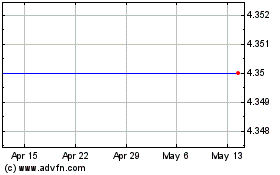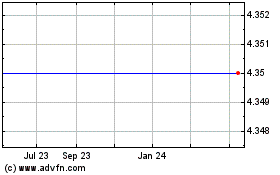Benefits of TomoTherapy(R) Radiation Therapy Highlighted in 82 Studies to Be Presented at ESTRO 29 in Barcelona
September 08 2010 - 8:00AM
Marketwired
TomoTherapy Incorporated (NASDAQ: TOMO), maker of advanced
radiation therapy solutions for cancer care, today announced that
82 studies examining the use of the TomoTherapy® treatment system
to treat common, complex and rare tumors throughout the body will
be showcased at ESTRO 29, September 12-16, 2010, in Barcelona. The
studies examine use of the TomoTherapy system on head and neck,
prostate, breast and lung tumors, as well as for treating blood
cancers, mesothelioma and pediatric patients.
In one of the most promising papers, researchers from San
Raffaele Scientific Institute in Milan, Italy compared TomoTherapy
to other radiation therapy solutions using Pareto front analysis to
explore the ability of these treatment methods to improve target
coverage without sacrificing organs at risk (OAR) or other
constraints. Researchers reported that "for all simulations
RapidArc® met less of the optimization criteria, while TomoTherapy
was able to produce the most homogeneous dose and have the
capability to conform dose distributions better than
RapidArc®."
Head and Neck Cancers Among the numerous
studies on head and neck tumors, two studies compare arc therapy to
helical TomoTherapy radiation delivery. Exploring the treatment of
patients with oropharyngeal cancer, researchers in Belgium and the
Netherlands concluded that in the treatment of head and neck
cancer, helical TomoTherapy treatment times are less than both
Smart Arc and step and shoot techniques. In fact, TomoTherapy
treatment was fastest of all techniques examined, at 6.6 minutes,
compared to 7.5 minutes for Smart Arc and longer times for other
intensity-modulated radiation therapy (IMRT) techniques, while
delivering the best homogeneity and equivalent or better OAR
sparing.
Similarly researchers in Austria and Germany compared four
different technologies for a parotid gland sparing head and neck
treatment technique with simultaneous integrated boost (SIB). Their
research showed that the TomoTherapy platform delivered the lowest
doses to the parotids and spinal cord and achieved the shortest
treatment time -- eight minutes versus nine to 24 minutes for the
other solutions examined.
Prostate Cancer Eight studies focused on
the use of TomoTherapy technology to treat prostate cancer in more
than 280 patients. The studies showed excellent outcome for these
patient groups, extending up to more than four years
post-treatment. TomoTherapy(SM) treatments resulted in very low
toxicities and side effects, even with delivery of escalated
doses.
Breast Cancer In a study of 30 stage III
breast cancer patients, researchers at The Ottawa Hospital Regional
Cancer Centre in Canada examined early results of loco regional
breast radiation using IMRT delivery by the TomoTherapy system. The
treatment area included the breast and chest wall, as well as
supraclavicular, axillary and internal mammary nodal regions. The
TomoTherapy system enabled conformal treatment that limited dosage
to healthy surrounding tissue, including the heart, lungs,
esophagus and thyroid. Researchers concluded that IMRT with the
TomoTherapy system "for loco regional breast radiation is feasible
and well tolerated with minimal acute and moderate-late skin
effects."
Lung Cancer Research done at San Raffaele
Scientific Institute was designed to assess the feasibility of the
TomoTherapy platform to deliver hypofractionated treatments in 15
patients with inoperable locally advanced non-small cell lung
cancer (NSCLC). After re-evaluating 12 patients in the study five
months post-treatment, 42 percent of the patients had a complete
metabolic response and 33 percent a partial response. The study
also showed that these patients experienced less toxicity and were
able to complete treatment in 13 treatment sessions rather than 20,
as is the norm. The study concluded that hypofractionation in
radical treatments for locally advanced NSCLC by means of helical
TomoTherapy delivery is feasible and shortens the overall treatment
time, and that the treatment allows an excellent toxicity
profile.
Complex Cases Highlighting the
effectiveness of TomoTherapy radiation therapy in complex cases, a
study of TomoTherapy use for one-and-a-half years at Greater Poland
Cancer Centre in Poznan, Poland noted, "TomoTherapy is a method by
which we can often achieve the treatment impossible to obtain on
the conventional linacs or the treatment with a significantly
better dose distribution than for conventional linacs."
The ability of TomoTherapy technology to treat complex cases was
also outlined in a number of studies, including:
- Mesothelioma -- This is a disease that is
difficult to treat because of the size and complex shape of the
tumor, which involves the outer lining of the lungs and internal
chest wall. In a study at San Raffaele Scientific Institute,
researchers compared two groups of patients treated with the
TomoTherapy platform, with one receiving a simultaneous integrated
boost (SIB). Those patients receiving the SIB experienced
significant benefits, with a one-year survival rate increasing to
72 percent, compared to 43 percent for the other group.
Additionally, patients receiving a SIB did not experience a relapse
for an average of 16 months versus six months for the non-SIB
group.
- Reirradiation of head and neck tumors --
Researchers in Korea investigated the efficacy and toxicity of
using the TomoTherapy system to reirradiate head and neck tumors in
patients who were inoperable. Nine patients were treated in this
study, with median follow up of nine months. Study results showed
that there was a treatment response rate of 66.7 percent.
Additionally, patients experienced extremely low acute toxicities
with only grade 2 skin reactions noted, and no sign of late
toxicity.
- Total Marrow Irradiation (TMI) --
Researchers at City of Hope in Los Angeles conducted a dosimetric
analysis of 51 patients treated with TMI or total marrow and
lymphatic irradiation (TMLI). The results showed that no patient
experienced greater than grade 2 toxicity, with half the patients
experiencing no nausea, which is a common side effect in other
similar treatments. Additionally, researchers noted that dosimetric
analysis demonstrated that TMI and TMLI with TomoTherapy technology
may have potential advantages over other forms of targeted systemic
radiation therapy.
- Pediatric -- Four studies focused on
treatment of pediatric patients, with three of those looking at
treatments for medulloblastoma. The fourth study recounted the
experiences of 62 patients, ranging in age from one to 14, at Grupo
Instituto Madrileño de Oncologia (IMO) in Spain, which examined how
the TomoTherapy system could be used in young patients to deliver
high doses of radiation while preserving healthy organs. The study
showed that the TomoTherapy approach allowed manageable levels of
toxicity, and was effective in treating the majority of the
patients -- upon post-treatment evaluation, 58 percent did not have
any evidence of illness, 7 percent showed a partial response and
another 14 percent remained stable.
To learn more about the TomoTherapy treatment system, visit
TomoTherapy at ESTRO 29 in booth 60, September 12-16 in
Barcelona.
About TomoTherapy Incorporated TomoTherapy
Incorporated develops, markets and sells advanced radiation therapy
solutions that can be used to treat a wide variety of cancers, from
the most common to the most complex. The ring gantry-based
TomoTherapy® platform combines integrated CT imaging with conformal
radiation therapy to deliver sophisticated radiation treatments
with speed and precision while reducing radiation exposure to
surrounding healthy tissue. TomoTherapy's suite of solutions
include its flagship Hi-Art® treatment system, which has been used
to deliver more than three million CT-guided, helical
intensity-modulated radiation therapy (IMRT) treatment fractions;
the TomoHD™ treatment system, designed to enable cancer centers to
treat a broader patient population with a single device; and the
TomoMobile™ relocatable radiation therapy solution, designed to
improve access and availability of state-of-the-art cancer care.
TomoTherapy's stock is traded on the NASDAQ Global Select Market
under the symbol TOMO. To learn more about TomoTherapy, please
visit TomoTherapy.com.
©2010 TomoTherapy Incorporated. All rights reserved.
TomoTherapy, Tomo, TomoDirect, TQA, the TomoTherapy logo and Hi-Art
are among trademarks, service marks or registered trademarks of
TomoTherapy Incorporated in the United States and other
countries.
RapidArc® is a trademark of Varian Medical Systems.
Investor Contact: Thomas E. Powell Chief Financial
Officer 608.824.2800 Email Contact Media Contacts: Kevin
O'Malley Director, Corporate Communications 608.824.3384 Email
Contact Susan Lehman Rockpoint Public Relations 510.832.6006 Email
Contact
Tom Online (NASDAQ:TOMO)
Historical Stock Chart
From Mar 2024 to Apr 2024

Tom Online (NASDAQ:TOMO)
Historical Stock Chart
From Apr 2023 to Apr 2024
